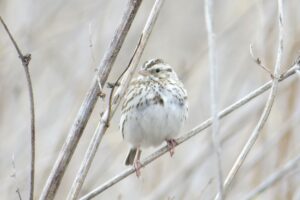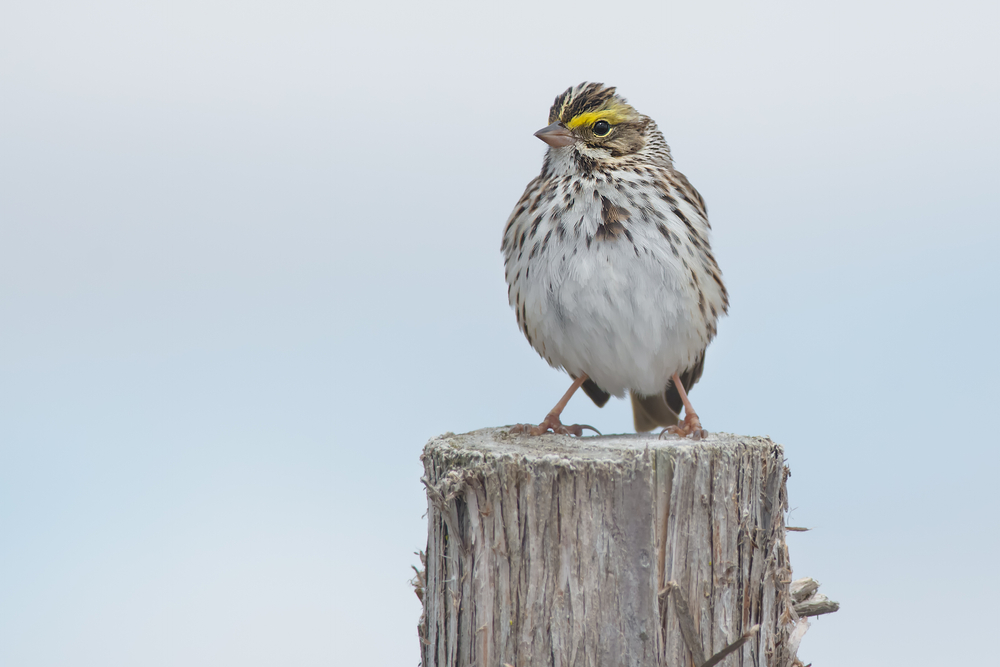Savannah Sparrow, Passerculus sandwichensis
Bill Rowe
If Birds of the Week were coming out in order of abundance, we would have covered the Savannah Sparrow a long time ago, since it can be one of the most numerous birds out there during migration, with the potential for seeing scores or hundreds of them if you walk enough fields. And that’s what it takes: walking, or at least driving slowly, and watching the sparrows that flush up from the fields in farmland, parks, and conservation areas. The bird is aptly named if you take “savannah” to mean open, grassy country and don’t worry about the fact that it was named for Savannah, Georgia, by Alexander Wilson in 1811. You will probably never see one at your feeder, as they do stick mostly to grassland—but they have no strict requirements, and you can find them in tall dense grass, short bunchy grass, or occasionally no grass at all, on bare ground. Savannah Sparrows occupy a huge breeding range: all of Canada and Alaska along with all or part of 30+ other states and a portion of Mexico. This has led to great diversity in their various regional populations, and to the naming of many subspecies by ornithologists—which in turn raises the question of what a “subspecies” means, and whether it makes sense to give different names to populations that blend into each other through small gradual changes (called “clines”). One clearly different subspecies, the pale “Ipswich” Sparrow, breeds on Sable Island off Nova Scotia and winters on the Atlantic coast; it used to be considered a full species and was listed as such in older books.
IDENTIFICATION: As just noted, Savannah Sparrows are variable: they may be darker or paler, browner or grayer, with anywhere from a lot of yellow on the face to none at all. Because they are streaked below, often with a central spot, they can be confused with Song Sparrows, but there are a number of differences that should point you toward Savannah: smaller size, crisper streaking, a brighter whitish to yellow eyebrow, and so forth. When in doubt, check the tail. The Savannah has a short tail with an obvious notch at the tip, while the Song Sparrow has a longer tail that is blunt or rounded at the tip. Other sparrows such as Vesper could also be a problem, but the distinction from the very common Song Sparrow is the most important to learn first.
ST. LOUIS STATUS: Common to abundant during migration, March-April and October-November; also present in winter far more than formerly, sometimes in numbers. Almost unknown as a breeding bird in Missouri; there is a single record of a nesting attempt in the St. Louis area.
Learn more and listen to the songs and calls of Savannah Sparrows here.


Note short, notched tail and much yellow in face.
Photo Credit: Bill Rowe
Paler bird with no yellow; note fine crisp streaks and white central crown stripe
Photo Credit: Bill Rowe




